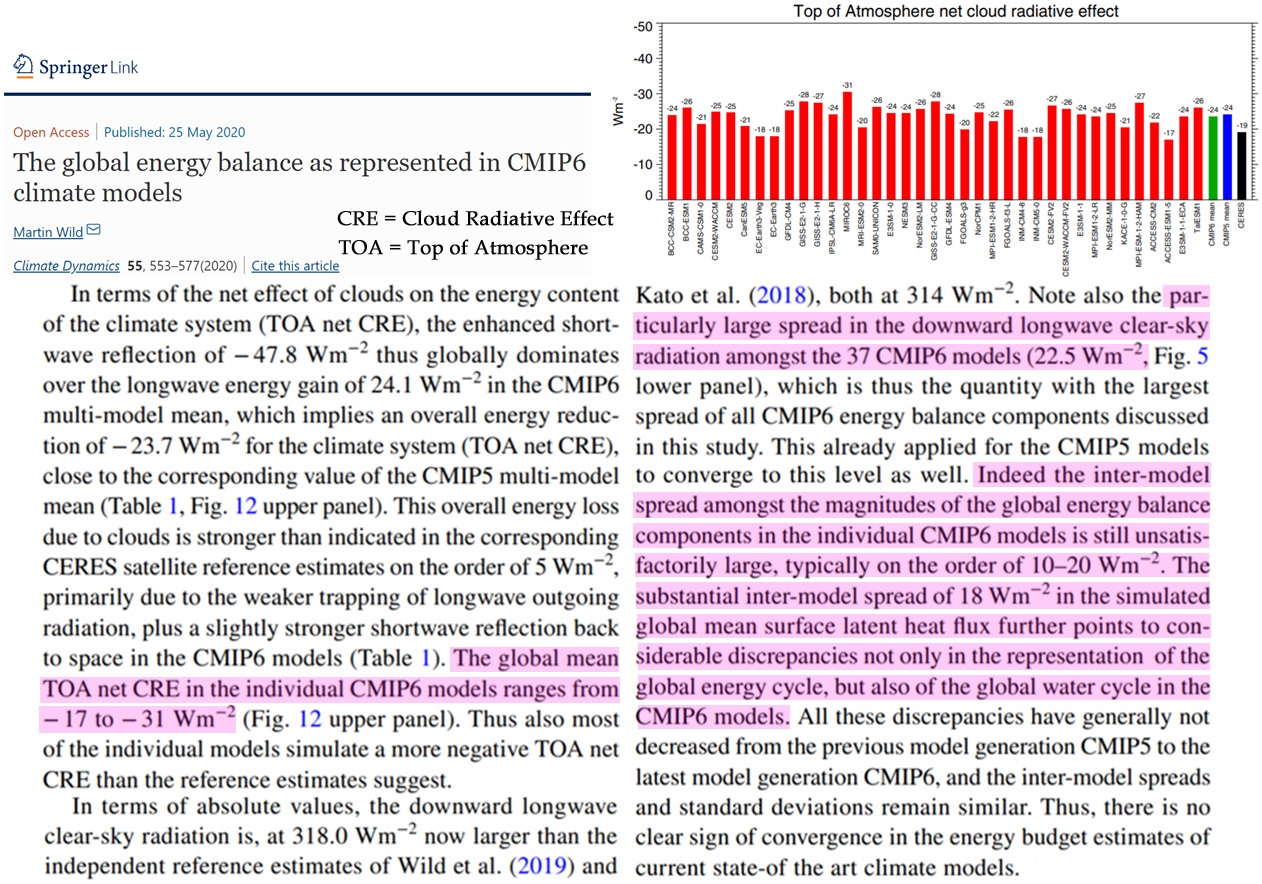The “unsatisfactorily large” magnitude of the discrepancies between models in estimating the various radiative contributions to Earth’s energy imbalance serves to undermine confidence that CO2’s small impact could even be detected amid all the uncertainty.
Scientists have engaged in offering their educated guesses, or estimates, of cloud radiative effects for decades.
In the latest models, CMIP6, the top of atmosphere (TOA) net cloud radiative effects (CRE) when considering clouds’ longwave and shortwave combined impact is somewhere between -17 W/m² and -31 W/m² (Wild, 2020). That’s a 14 W/m² spread in CRE modeling.
The discrepancy range between modeled estimates for downward longwave clear-sky radiation is 22.5 W/m². This is the component where CO2’s underwhelming 0.2 W/m² per decade impact (Feldman et al., 2015) is manifested. Modeling discrepancies are thus more than 100 times larger than CO2’s forcing contribution over a 10-year period.
Dr. Wild further reports that there is a generalized 10-20 W/m² magnitude modeling discrepancy in the “global energy balance components” estimates, such as latent heat flux (18 W/m²). These spreads in climate modeling are referred to as “unsatisfactorily large” and they may preclude accurate representation of the global energy cycle and water cycle.
“The substantial inter-model spread of 18 Wm−2 in the simulated global mean surface latent heat flux further points to considerable discrepancies not only in the representation of the global energy cycle, but also of the global water cycle in the CMIP6 models.”
So, unfortunately, no real model improvements to energy budget estimates have been realized over the course of decades.
“All these discrepancies have generally not decreased from the previous model generation CMIP5 to the latest model generation CMIP6.”






Between 17 and 31 W/m^2 is a 14 W/m^2 spread
Did I read that correctly? The range of estimates of incoming radiation are larger then the “greenhouse effect of the radiation from the increase of CO2.
[…] New Climate Models (CMIP6) Offer No Improvement, Model Discrepancies As Large As The Last Version (C… […]